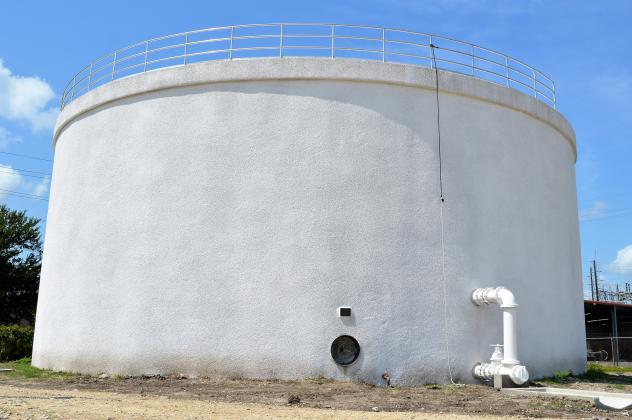Navasota “superior” water rating not left to chance
Part 4 of 4: Maintaining “superior” water
The business of safe water is a 24-hour responsibility and the City of Navasota answers to the Texas Commission Environment Quality (TCEQ) when it comes to water quality. What other measures are being taken to assure that safety, and what is the cost of safe water?
Flushing the lines
It’s Thursday evening and that familiar call goes out that the City is flushing the water lines.
Utilities Director Jeff Greer said, “The state requires we flush all the dead ends of our system. All these subdivisions have culde-sacs with dead end mains not connected back into another part of the system. It has been a standard for the city to start flushing hydrants from the inside out all the way to the ends.”
Flushing the lines occurs during the night by water utility employees and begins at the groundwater storage tank working outward. When the fire hydrants are opened, it removes mineral deposits, calcium, and iron from the pipe itself, running it through the fire hydrant. When clear, crews move to the next hydrant.
After the lines have been flushed Greer said, “Residents should let their faucets run for 30-45 seconds until it’s clear.”
To be notified of line flushing, sign up for Notify Nav by calling City Hall or online at navasotatx.gov.
Utilities Administration Assistant Jennifer Reyna said, “If customers put their complete information including address, if there is an isolated incident, I can put out a call for a select area, so they won’t get pulled into that call list.”
Repair safety
City Manager Brad Stafford said, “When crews are repairing water leaks, there are reasons why they leave water flowing. You don’t get bacteria in your line if you leave the water flowing.”
He continued, “If they turn it off, cut the pipe and the mud gets in there, then you have coliforms and all kinds of things that can start growing in the water. We’d have to do the boiled notice. If we keep the water running, it keeps the dirt from getting in the pipe.”
Cost of water quality
When asked why Navasota’s hard water isn’t filtered at the groundwater storage tank, Greer said, “There’s a lot of water going through the system, sometimes 2 million gallons a day. Treating every drop would be very expensive and in the millions for the city.”
Roughly 60% of water volume used is not inside homes but at carwashes, on roads as a dust treatment, in swimming pools and watering lawns and gardens.
Another cost factor is that arsenic is a naturally occurring constituent in the ground and would require additional maintenance. What is filtered out must be disposed of, and what is being disposed of could become a hazardous waste.
Equipment maintenance is constant and water utility users have felt the pinch on their monthly utility bill. The new 1-million-gallon concrete groundwater storage tank was purchased with Certificate of Obligation Bonds and is being paid back by revenue from meter fees. Included in the bond was the refurbishing of the Oakwood Street elevated storage tank and replacement of eight sewer lines throughout the city.
The price tag for quality water in Navasota from production to distribution is $1.7 million - but exactly how much is too much for safe water?

